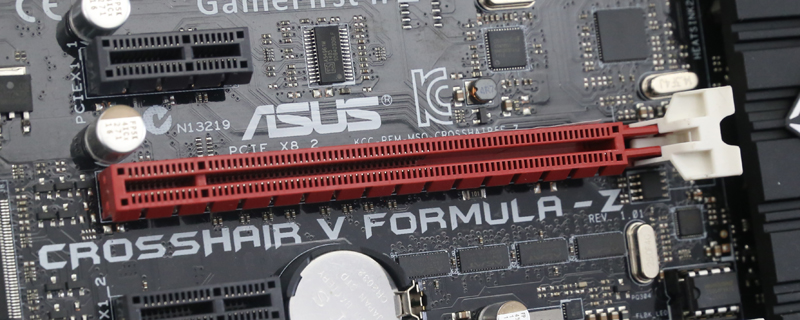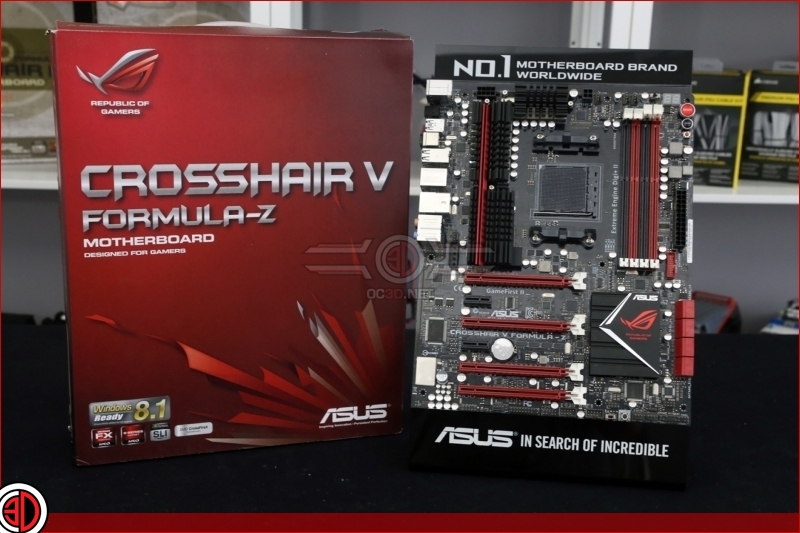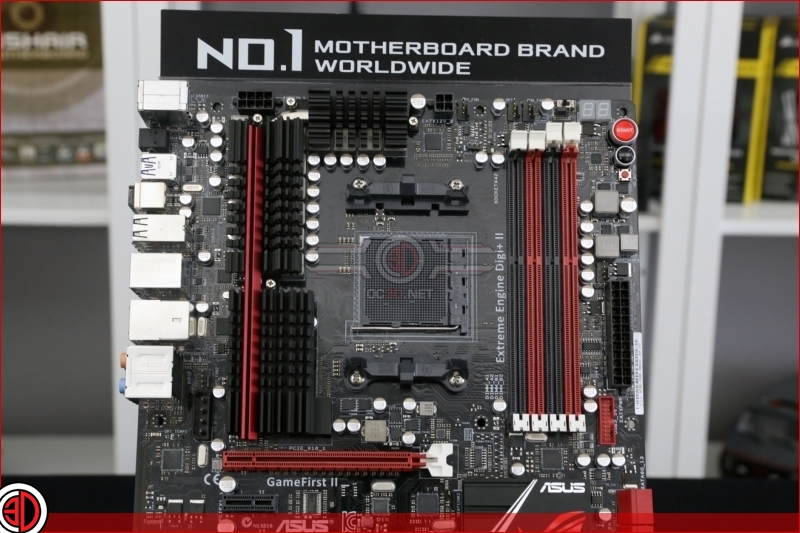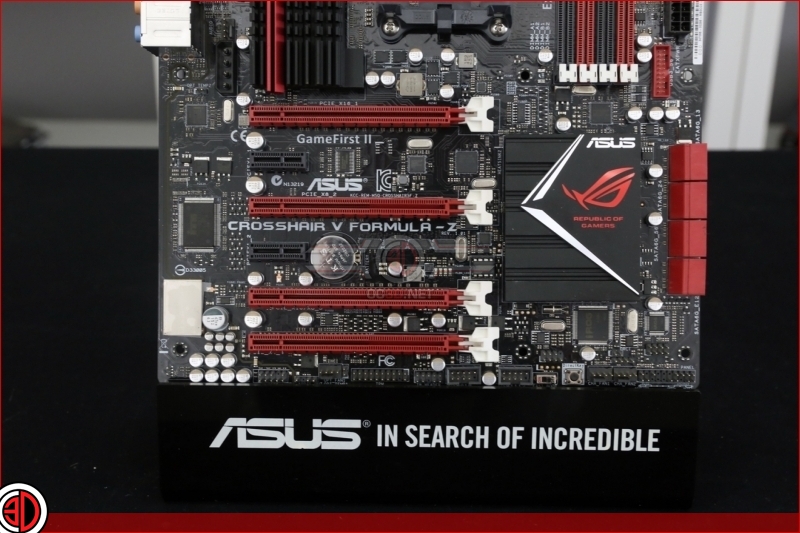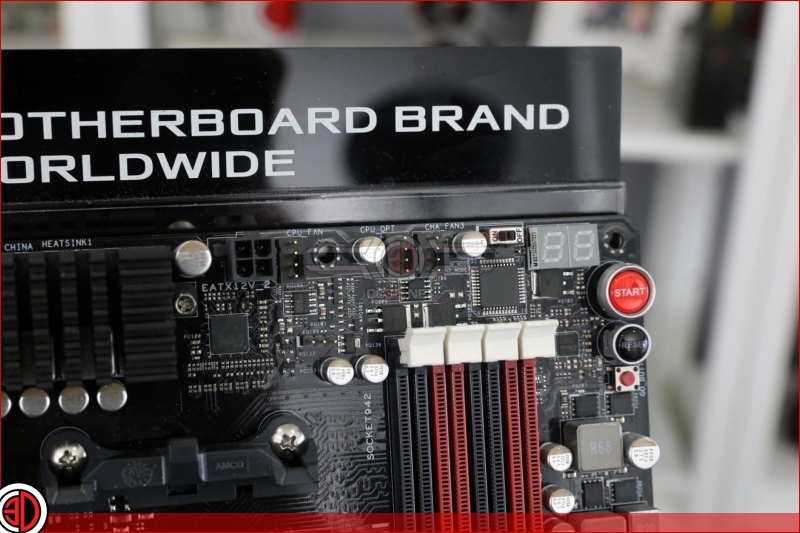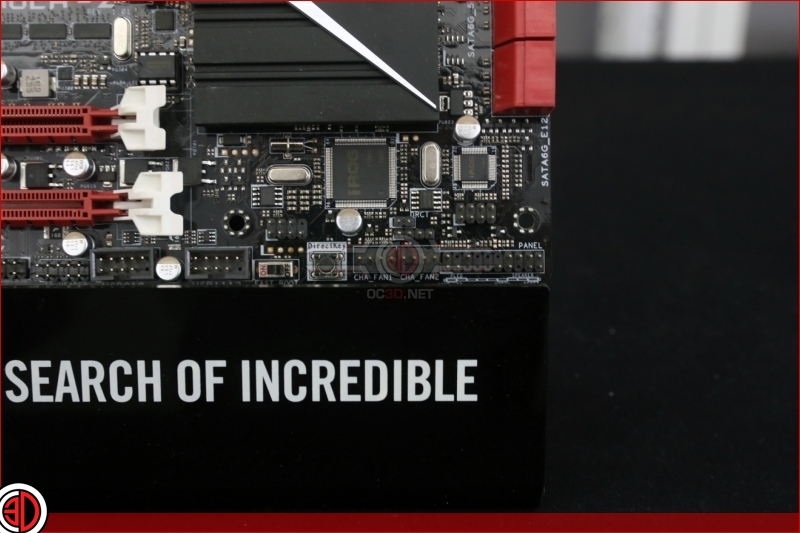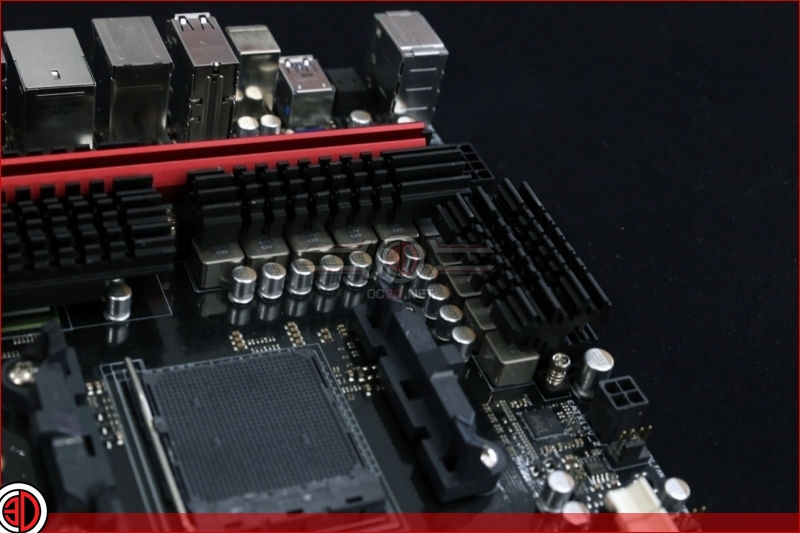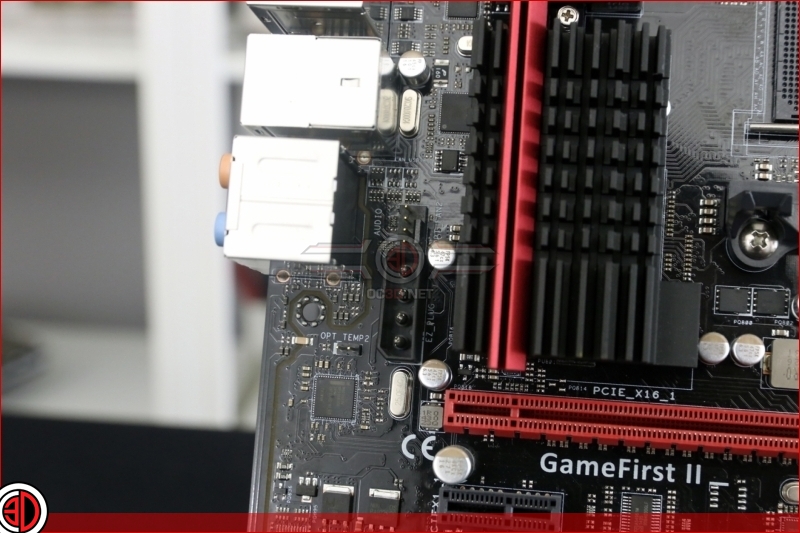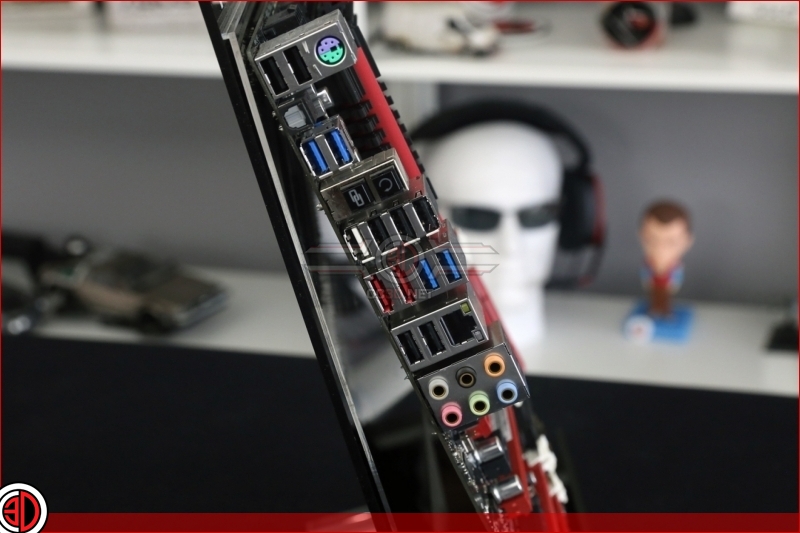ASUS Crosshair Evolution
Crosshair V Formula-Z
The Crosshair V is a refinement of the rules laid down on the Crosshair IV, and although it brings a few improvements there isn’t the huge changes we’ve seen up to this point. It’s clear that the AMD AM3 socket was very much long in the tooth by this point, and it had almost reached the limits of what you could do with it. To a large degree it is about what is no longer here, rather than what is new to the party.
The design is very much now set in stone. Like a sunburnt penguin playing roulette the Crosshair V is all about the red and black. Or perhaps ASUS just enjoy the fight over the best tasting wine gums in the pack. So what has the Crosshair V lost? Firstly the legacy PCI slot which they doubled up on the Crosshair IV has disappeared altogether. Because, let’s be honest, if you’d not replaced your PCI device by now you were best left behind. Progress waits for nobody. On the Crosshair III we lost the floppy connector, the Crosshair IV dispensed with the IDE connector, and the Crosshair V removes the old SATA II port. It’s 6 Gb/s all the way now. We also finally get rid of the Firewire port, both internally and around the back. It was designed for demanding video but by the time HD video was affordable and in the hands of the masses, USB had won the war. The price you pay for being first. History is littered with the corpses of companies that were the first to bring something to market but got crushed by the big corporations improving upon their ideas. Anyone who lived through the brief glorious days of 3DFX Voodoo cards will understand.
Hardware wise the Crosshair V continues the gradual improvements of the AMD chipset which is here in 990FX guise, with the 950 Southbridge. AMD were determined to keep that design idea. The downside of having backwards compatibility on your socket. Sure the socket here is AM3, and now the Crosshair V can do 2400 MHz DDR3 supporting up to 32GB, but there are some hangovers from the old days that are limiting the performance, even if that AM3 socket now handles 32nm CPUs.
Something which we take for granted here, but was advertised heavily upon the launch of the Crosshair V, is the support for both SLI and CrossfireX configurations on the same motherboard! No longer do you have to pick your GPU and motherboard to compliment each other, now you can just grab whichever you prefer and get on with it. Yes, it seems simple to us now, but it was revolutionary at the time.



